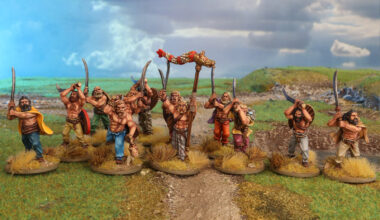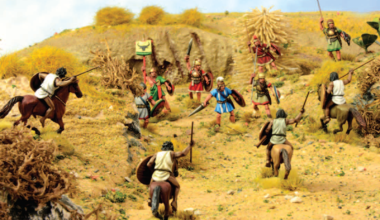Mediterranean Rome

By 50BC, Rome was well established as the centre of an empire in all but name. Sea transport and trade were essential, and to a great extent, the limits of the empire were defined by the distance from the nearest port rather than the distance from Rome. With the Carthaginian threat to the Mediterranean maritime network dealt with, it was now possible to look further inland.
Military and political leadership were intertwined in the late Roman republic. Provincial governors were expected to lead their forces and deal with whatever troubles arose. Relatively peaceable areas were governed by a proprietor, with more troubled areas or important border regions instead assigned a proconsul who had the power to command legions where a proprietor did not. The governorship was a route to higher office in Rome itself, and could also be a means for an ambitious man to enrich himself using resources provided by the republic.
Military Service
The most important changes in the Roman military system were implemented by Gaius Marius, a plebeian who had clawed his way into the political arena on the back of honourable military service. Marius was highly successful as governor and commander but was unavailable in 102BC at a time when Rome faced a severe crisis.
Strict rules about the rotation of consulships forbade him from being assigned, but as the Roman army faced a string of defeats the regulations were amended. Marius was placed in command of a Roman force defending against invasion by tribes from Gaul and given multiple extensions of his term until the threat was finally eliminated.

Marius implemented many changes in the Roman army, which would create the formidable fighting machine deployed by Caesar and later commanders. Instead of having to provide their own war gear, soldiers were issued arms and equipment by the state, opening military service to the poorest classes who at the time desperately needed a source of employment.
A new class of professional soldier began to emerge, whilst at the same time, Marius improved training and did away with much of the army’s baggage train. Soldiers were issued only what they needed and forced to carry most of it themselves on the march. This led to the nickname of ‘Marius’s Mules’ for legionaries, but the result was a highly disciplined force of long-service professionals.
A system of providing for veterans by holding back some of their pay until they left service and granting land in new provinces enabled a poor man to improve his lot and perhaps buy a better life for his family at the price of years in the legion.
The recruitment of poor plebeians into the army was accompanied by diminishing social distinctions within it. Legions were equipped and trained the same, providing the backbone of the republic’s fighting power as heavy infantry.
Appearance & Equipment
Legionaries of Caesar’s era were still issued the lorica hamata, or chainmail shirt, as their primary protection but equipment evolved to meet new threats. The Roman army standardised as much as possible, but items would remain in service for as long as they could be repaired; a legionary might have a helmet issued in his grandfather’s day if it was still sound. This would create some irregularity in appearance.

The Roman Warband
Warbands from Caesar’s Legions represent a small force split off from a legion for an extended period of time to achieve specific objectives; these might include hunting down an enemy Warband, patrolling a border or defending a Roman town. A Warband of Caesar’s Legions has perhaps the best soldiers of the ancient world with access to a large number of weapons and equipment. Man-for-man, Caesar’s Legions will be very hard to beat but will always be outnumbered by lesser men.












